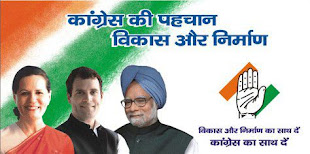Angshuman Dey
Khadi and non-violence were two powerful weapons with which Mahatma Gandhi equipped Indians to throw out British colonial rulers. In 1920, Indian National Congress had at its Nagpur session first declared its aim to promote khadi as the nationalist fabric which Gandhi referred to as “livery of freedom”. Soon, khadi became the symbol of defiance as massive bonfires were lighted across the country and Indian struggled against colonialism by burning their Manchester textiles. Khadi continued to grow into prominence and a place of pride for Indians.
Fashion designers have found khadi their canvass for imaginative creations. Khadi as defined by Gandhiji as a cloth hand woven in India from yarn hand-spun in India has been taken as legal definition of khadi. Khadi is sourced mainly through 1958 khadi institution spread over the length and breadth of the country. Some of the major khadi producing states of India are Jammu & Kashmir, Uttar Pradesh, Rajasthan, Madhya Pradesh, West Bengal, Tamil Nadu, Kerala and Assam. In terms of value, the annual production is in the range of Rs 700-1000 crore.
Khadi provides employment to the poor, gives earnings to small cotton farmers, is eco-friendly, porous/airy, has simplicity which gives it elegance, and connects to the freedom movement and Gandhian values. It is unique for its property of staying cool in summer and warm in winter which makes it exclusive among the fabric. The products are unique in the sense that they are one of a kind besides being truely “cottage” or “hand-spun and hand-woven”. They are unique because they are “flawed” and are not mindless creation of machines. That’s why each piece of khadi is different. That’s why many won’t mind paying for its exclusivity.
Khadi gets softer with each wash which makes it an ideal tropical fabric. India’s thriving confident middle class has today started looking inwards for the style cue and design mantra. Khadi is ripe for re-incarnation as a livery of young, surging India. A rising number of young fashion designers are seeking out local fabrics, craft & technique to give expression to this trend.
Khadi is a potent tool for real, inclusive growth. Being a traditional labour intensive industry, one square metre of khadi cloth requires about 281.05 gram of hand-spun yarn which a spinner could earlier produce in about 3 days, but can now produce in just half day, thanks to the new model charkhas introduced by Khadi and Village Industries Commission. About 9 lakh spinners and weavers work in this sector associated with 1,958 khadi institutions spread across the country. An artisan on the average gets works for 200 days in a year. These institutions are mostly Trusts and Societies i.e NGOs. Some of the institutions are as old as the freedom movement itself and many great leaders of the stature of Mahatma Gandhi, Pandit Jawaharlal Nehru, Acharya Vinoba Bhave and others were involved in their creation.
However, Khadi has had its challenges in its spectacular growth mostly on account of conservative market thinking which resisted reform to the changing, competitive market and participate in the growth bandwagon. Economy was a decade back unshackled from unnecessary controls and the world is today witness to the “Indian Story”. Progressive khadi activists and khadi-lovers have realized this and are most vocal today for reforms and are voluntarily taking up the “reform package”. Expectation from KVIC is that in addition to regulating quality and safeguarding the interest of artisans it should also be more institution-friendly and re-establish the trust in the khadi institutions. Introduction of Market Development Assistance has not exactly been smooth. But this revitalization pill was required as a cure for sickness starting to infect a number of institutions in the past, and remaining dependent on rebate forever meant denying growth. Rebate may be promoting market in the short run, but it had already led to an idea that khadi is unsustainable without rebate. Today’s customer is quality conscious rather than a discount-seeker and how can khadi producer disappoint him?
The existing brands of khadi are: Khadi India or Khadi Bharat, Sarvodaya, Desi Ahar, Kutir and others. But soon a standardized “Khadi Mark” will give khadi product a genuine identity. At present the marketing takes place through a network of around 7000 sales outlets managed by khadi institutions, besides KVIC. To realize its true potential, the sector needs reforms and the Government has embarked upon a massive reforms in khadi sector; linking it also with village industries sector to establish synergy. Assisted by Asian Development Bank with a Rs 720 crore over three year in the first phase, 300 khadi institutions spread over the country will derive benefit in the form of enhancing their capability through equipment upgradation, better raw material quality, cost reduction and professional support in marketing led by private partners. This will put the sector into a new trajectory of growth and equity ushered by a revamped KVIC. Also, an increased emphasis on the sector is evidenced by a quantum jump in the Government budget allocation for this sector from Rs 261 crore to Rs 542 crore.
The basic approach being adopted is making khadi activities artisan-centric without compromising the growth and sustainability of the sector. From customer’s point of view, khadi should be more accessible, well-priced, stylish enough to cater to the taste of urban India and to catch the imagination of the younger generation with a cultural resonance in the form of a pride of “Indian-ness” just as the world has now recognized our economic resilience due mainly to a strong domestic market and in the past had found their way in the Gandhian values. To fit it perfectly, Khadi has already become a style statement for many.


























0 Comments